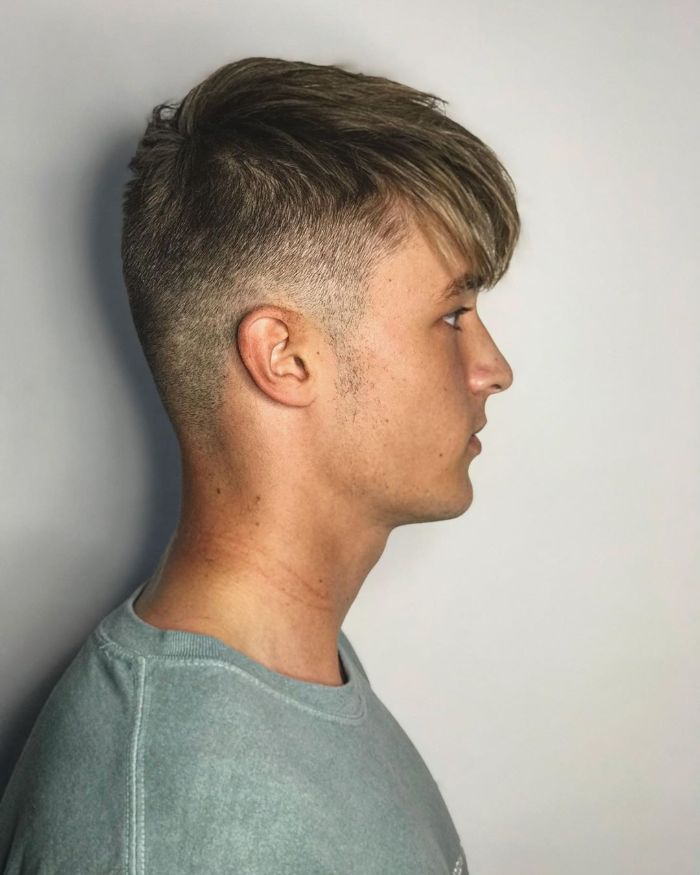Table Of Content

2C curls are wavy but thicker, coarser, and more prone to frizz, featuring defined S-shaped waves that start at the roots. But with so much information out there, it’s easy to get overwhelmed about hair care. Are you tired of being confused by the different textures on your head of curly hair? Do you feel like giving up because it’s too complicated to style?
How to determine the best products for your curl type
The more protein bonds in the hair shaft, the curlier the hair will appear. That’s why we’ve examined two industry pros to break down the finer points of the typing categories and provide product recommendations to make the curl-care aisle less intimidating. Say goodbye to confusion and hello to well-defined, beautiful curls. Read on to become a curl-typing pro and take the first step towards embracing your texture.
How to identify your curl pattern
These curls have a circumference of a large piece of chalk or a tape dispenser. They have a smooth texture and are often shiny but can be prone to frizz, especially in humid conditions. Type 3b curls are a beautiful combination of loopy S-pattern curls and tight ringlets. They are characterized by a circumference similar to that of a marker or pen. These curls are usually voluminous and have well-defined curls.
TYPE 4: Coily hair
If you have thick hair, you won’t be able to see your scalp beneath it. If you have thin hair it will be quite visible, especially when parted. If you’re somewhere in the middle, you have medium-density hair. “My first question to anyone who comes into my salon is, ‘What does your hair look like on a humid day? If it lacks moisture, she says, it’s likely porous and will absorb what’s in the air, causing frizz.
Hair Types

Lay them flat against a white surface and watch them take their natural shape while they air-dry. You may identify with a few different patterns, as all hair doesn't necessarily contain the same type of curl consistently throughout. Kinky, coily, curly, wavy, and straight hair can also be stressed by heat styling, coloring, or chemical treatment and may need some extra TLC, so damaged is a hair type too. "Your curl type is determined by the shape of the follicle that your hair grows out of from your scalp," says hairstylist Vernon François. But just because two people both have a natural wave to their tresses doesn’t mean they possess the same exact hair type.
When styling Type 2 hair, it’s important to use products that enhance the natural curl pattern without weighing the hair down. Using a diffuser when blow-drying can also help create defined, bouncy curls. According to François, this styling cream works across all hair textures and is great for doing two-strand twists with curly, kinky, and coily hair types. "It works great with several styles like finger twists with wavy, kinky, coily types," he says. For Type 3 hair, a shoulder-length cut with long layers perfectly showcases the curls.

Hair Type Chart: What’s Your Hair Type?
This happens due to an even distribution of sebum (natural scalp oils) along the length of your strands. On a positive note, you’re likely less prone to dryness and breakage. Type 3 curls thrive with products that provide moisture and definition.
At the moment, any hair typing system that doesn’t have a legitimate following within the curly community (or natural hair community) is considered outside of the scope of this guide. You might want to use styling milk if you want more definition but less frizz. I would imagine that the Type 4C hair type was created by a member within the natural hair community – just like the Type 3C hair type. You’ll notice that Type 3C, Type 4C, and 4D hair types aren’t mentioned in the discussion above, that’s because they were not included in the original Andre Walker system.
Best hair straighteners to buy 2024 UK – ghd, Dyson and more - Good Housekeeping uk
Best hair straighteners to buy 2024 UK – ghd, Dyson and more.
Posted: Mon, 08 Apr 2024 07:00:00 GMT [source]
While type A wavies can easily alternate between straight and curly styles, while other hair types can be resistant to styling. Despite incredible volume, type 4 hair is the most fragile and prone to damage. Because of the highly textured curl pattern, the oils produced at the scalp don’t reach more than one or two inches down the hair shaft.
In terms of haircuts, layered cuts can add volume and movement to Type 1A hair. Short haircuts like pixie cuts or bobs can also help make the hair appear thicker and more voluminous. If you can’t make it to a stylist, you can try to determine your hair characteristics at home, which will help you find the right products for it. Sabina (she/her) is the director of the Beauty, Health & Sustainability Lab at the Good Housekeeping Institute, where she has overseen skincare, haircare and makeup testing since 2012. She also reviews applications, substantiates claims and evaluates products for the GH Seal and the Beauty Awards and Sustainability Awards programs.
But if it dries with a slight bend or "S" shape, you have wavy (type 2) hair. The Got2Be styling gel linked for type 4B is also a great choice for 4C. Protective styles like dreadlocks, goddess locs, sisterlocks, tribal braids, and other protective natural hairstyles are especially useful for this hair type.

No comments:
Post a Comment